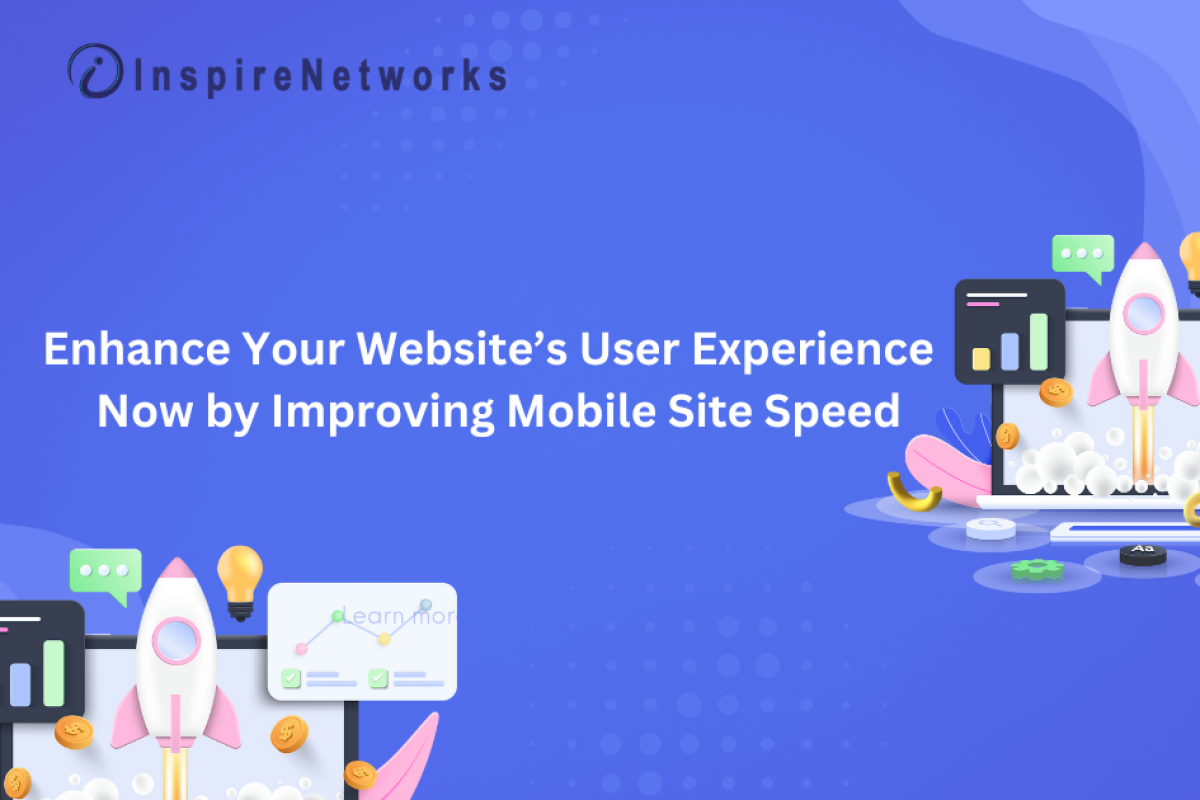Attracting visitors to your brand’s website is only part of the challenge; the other crucial aspect is retaining their attention and securing their business. Chief Marketing Officers (CMOs) understand that a brand’s digital experience, encompassing its website and social media presence, significantly influences whether prospects remain to explore further.
Since 2017, mobile devices consistently contribute to around 50% of global website traffic, with recent figures nearing the 60% mark. The surge in mobile usage can be attributed to apps, social media, streaming services, and video platforms, while factors like remote work, accessibility, and convenience also contribute to the popularity of mobile sites.
For organizations, this underscores the importance of prioritizing mobile speed optimization to enhance user experience. Even if your content is top-notch, your social media posts are engaging, and your product is compelling, users may quickly leave if they encounter difficulty accessing your website. A slow mobile site can detrimentally affect your SEO efforts, making it challenging to compete effectively.
Considering that your mobile site serves as the initial impression for potential customers and is often the first resource they consult for contact information, it’s crucial to make a positive impact. Let us guide you on how to achieve this.
Rapid downloads are essential for mobile site speed:
With the average American spending 5 hours and 25 minutes on their phone, every second becomes crucial. How many times have you clicked on a website link only to encounter a blank page waiting to load? Consumers expect information to be readily available, especially when using a mobile device for quick searches.
If users have to endure more than a few seconds of waiting for a site to load, frustration sets in, leading them to abandon your page in search of quicker alternatives. Even if you possess outstanding marketing assets and clear messaging, a slow-loading website can cost you the opportunity to engage with potential customers.
Slower speeds correspond to lower SEO rankings:
As mobile search engines and websites facilitate easier access to information about business products and services, the abundance of options requires users to sift through an extensive list before delving into a business’s offerings. Consequently, users tend to click on the initial pages displayed in a search, favoring businesses with higher SEO rankings.
At the forefront of digital marketing efforts, SEO best practices underscore the significance of content. Once a business addresses its content marketing requirements, attention must shift to search engine optimization and rankings to effectively deliver content and generate leads.
Enhancing your ranking involves the creation and upkeep of a user-friendly website. While much emphasis is placed on desktop experiences, it is crucial to extend that focus to mobile sites. In fact, numerous B2B SEO experts assert that Google penalizes sites lacking mobile optimization.
Buyers are in search of a sleek and user-friendly design and interface:
The contemporary buyer is notably more independent and discerning than in the past. Presently, 65% of customers heavily rely on websites, favoring remote human interactions or digital self-service options over conventional, direct communication with sales representatives. Additionally, customers typically require an average of 27 touch points before making a purchase. How can you ensure that each interaction leaves a lasting impact?
Initiate the process by boosting your brand’s visibility through a high SEO ranking. Once visitors land on your site, guarantee a positive experience. This entails having a streamlined, professional, mobile-first design that is easily navigable on various devices and allows users to seamlessly engage with your site’s interactive elements.
Achieving this goal involves implementing a few straightforward B2B web design trends that strike a balance between sophisticated technical features and user-friendly functionality.
Create an app-like experience for your website:
Transform your website into a captivating and enjoyable experience for visitors by adopting the mindset of an app developer. Consider ways to simplify the design and enhance the mobile experience, enabling users to swiftly access information while being captivated by engaging graphics and innovative interactions. Encourage creative thinking in this endeavor.
While various factors influence mobile site speed, such as connectivity and device specifications, businesses have control over the design and optimization of their sites. Striking a balance between delight and delivery is essential. Craft a mobile website experience that is not only interesting and interactive but also ensures that information is clear, readily available, and easily accessible.
Opt for simplicity with a one-page website:
Whether you’re showcasing a specific product or still in the process of building a comprehensive website, establishing your brand’s presence is crucial for connecting with potential customers. Even if resources are limited for regular blogging or detailed content, one-page websites, such as product pages and landing pages, offer quick and straightforward solutions.
Even as more information becomes available, one-page sites provide an uncomplicated way to introduce your message to new visitors without overwhelming them. Additionally, these sites are mobile-friendly, presenting information and essential resources in an easily digestible format.
Incorporate AI-powered design:
Despite the overwhelming coverage of AI in marketing, it can be a valuable tool for adapting to customer needs. AI-powered design, from automation to eliminating redundancies, swiftly identifies issues and offers solutions. It can resize images, optimize layouts for various devices, and automate repetitive tasks. Analyzing user data, AI also provides recommendations for more effective designs that reduce latency.
Make intelligent design choices:
Recognizing the universal importance of good design, especially for B2Bs aiming to clearly communicate and engage site visitors, start by embracing minimalism. Utilize large headlines, concise messaging, contrasting colors, and ample white space between text and images. Incorporate clickable interfaces for calls to action, pricing details, and communication resources, enabling users to navigate your site independently.
Emphasize convenience:
Given the constrained time and touchpoints influencing the user experience, tasks like filling out a form, completing a checkout, or initiating a chat should be equally quick and dependable on mobile devices as they are on a web browser. It’s crucial to structure your site design so that all calls to action are strategically placed in high-traffic and visible areas, optimizing the potential for mobile conversions and lead generation.
Harmonizing your website design, B2B content marketing, and SEO efforts to prioritize a mobile-responsive and mobile-friendly website will further enhance the overall user experience.
How to Assess the Speed of Your Mobile Site:
In recognizing the autonomy of modern consumers and their limited attention spans, it is essential for your website to deliver information swiftly. While multimedia elements such as videos, audio files, images, digital brochures, and white papers are valuable for comprehensive information, they can adversely affect the loading speed of your site. Additionally, factors like plugins, themes, coding, and server-side scripts can have a pronounced impact on website speed, especially on mobile devices.
Regularly conducting site audits across various devices allows you to obtain real-time results and identify areas that may require attention. Google’s PageSpeed Insights tool is a valuable resource for analyzing your site’s speed across devices. It offers separate scores and recommendations for enhancing mobile and desktop versions of the site. The tool’s interface is user-friendly, resembling a typical Google search. Simply input your website’s URL into the text field and select “analyze.”
Furthermore, Google’s infrastructure provides additional tools for analyzing and optimizing your website. These tools grant access to popular open-source libraries, enhance privacy and security, and provide updates on the latest techniques to improve web page performance and optimization.
How to Improve Mobile Site Speed Optimization:
Enhancing user experience involves more than just using tools like Google’s PageSpeed Insights; backend optimizations can significantly boost mobile site speed.
1. Utilize Local Caches:
For mobile browsers, employing local memory for caching resources instead of relying on remote memory can enhance speed. Local caches, designed for mobile devices, prove beneficial for the local application. Additionally, cache plugins help reduce resource usage when loading pages.
2. Minimize Redirects:
Excessive redirects can lead to a frustrating user experience with sluggish speeds. When constructing a website, be cautious with redirects in internal links and menus. Conduct an audit for established sites to identify and eliminate duplicate and unnecessary redirects.
3. Streamline Plugins:
Reduce the number of plugins on your site by reviewing and removing outdated ones. This not only enhances speed but also improves security. Disable plugins and gradually enable them one by one, using PageSpeed Insights to assess site speed and identify plugins that may need removal.
4. Resize Media Content:
While large images, carousels, videos, and pop-ups may be suitable for desktops, they can impede mobile site performance. Consider not only the impact on speed but also how media affects site navigation. Ensure that large media elements do not obstruct vital information or disrupt content above the fold, as mobile site space is valuable real estate. Opt for media that is unobtrusive, non-distracting, and engaging.







